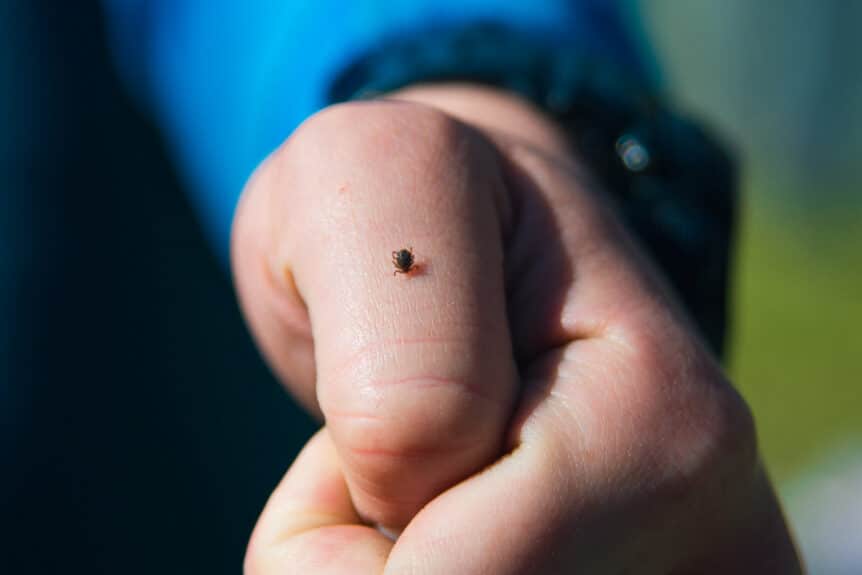Welcome to tick season! Ticks like to make their appearance from April to September, so now is the time to start getting ready for those tricky little guys. Ticks can carry some serious diseases, such as Lyme disease, but those bites hurt either way. We’re here to give you 6 big tips to help you prepare for the season and avoid the many diseases that can come with tick bites.
The only way to get Lyme Disease? Infected ticks.
The CDC says that there are, on average, 30,000 cases of Lyme disease each year that get diagnosed. The only way that people get this disease is from being bitten by infected ticks, specifically blacklegged ticks, so keeping aware of your body during this range of months is important.
The chances of getting infected with Lyme Disease from a tick bite depends on where you are, what kind of tick has bitten you, and how long it was attached. Remember, the longer an infected tick stays attached, the higher your chance of contracting Lyme Disease. They need at least 24 hours before the disease starts to transmit, so get them off quickly if you find one.
While ticks will take advantage of whatever skin they can sink their teeth into, they prefer the more hidden spots. Places like you scalp, armpits, groin, or back of the knee are some of their favorite spots to attach.
Prevention is the key to staying safe.
Knowing how to keep yourself safe and avoid getting bitten by ticks is the top way to make sure you aren’t affected by Lyme disease. When enjoying your outdoor activities this spring and summer, remember these tips:
- Bug spray is your friend.
- Do a “tick check” when you come home to see if any of the little guys have attached themselves to you. If they have, pull them off carefully and quickly with some fine-tipped tweezers. Be sure to shower right after.
- For your own property, make sure to keep your lawn area well-maintained and pest-free.
- When out hiking, try to wear lighter colored clothing to make it easier to spot ticks that hop on for a ride. You should also walk in the center of trails to make it harder for them to get to you.
Lyme disease symptoms can look different.
Let’s look at the symptoms you may experience if you do contract Lyme Disease:
- The “bullseye” rash
- Chills and fever
- Fatigue
- Headache
- Muscle and joint pain
- Later onset symptoms include arthritis, facial palsy, heart issues, memory trouble, etc.
If Lyme Disease is left untreated, the initial symptoms will fade, like the rash and the fever, but the infection is still there affecting your heart, joints, and nervous system. That is why diagnosis and treatment is crucial.
This diagnosis requires more than just a simple lab test.
When you go in suspecting Lyme Disease, a healthcare provider will look at several things: where you were when you were exposed, any visible signs or symptoms, and a blood test.
If they find that you have been infected, they will generally provide a course of antibiotics for 2-4 weeks. However, do keep in mind that your body will continue to make those antibodies for months afterwards. You won’t feel the effects, but that could impact any future blood tests for Lyme Disease in the case of re-infection.
Ticks can carry more than just Lyme Disease.
Ticks are tricky little critters. Lyme Disease is just one of their infectious traits. They can also carry things like Anaplasmosis, which infects white blood cells, and Babesiosis, which infects red blood cells.
Stay safe this spring and summer and be aware of your surroundings and your body to make sure that you don’t get impacted by Lyme Disease!
Complete our online form, or give us a call today. While we cannot prevent lyme disease, we have the experience to treat and control pests in your yard. We have decades of local experience and can make sure your lawn looks its best as well! If you are overwhelmed, need help or just want someone else to keep your family safe call us today!

